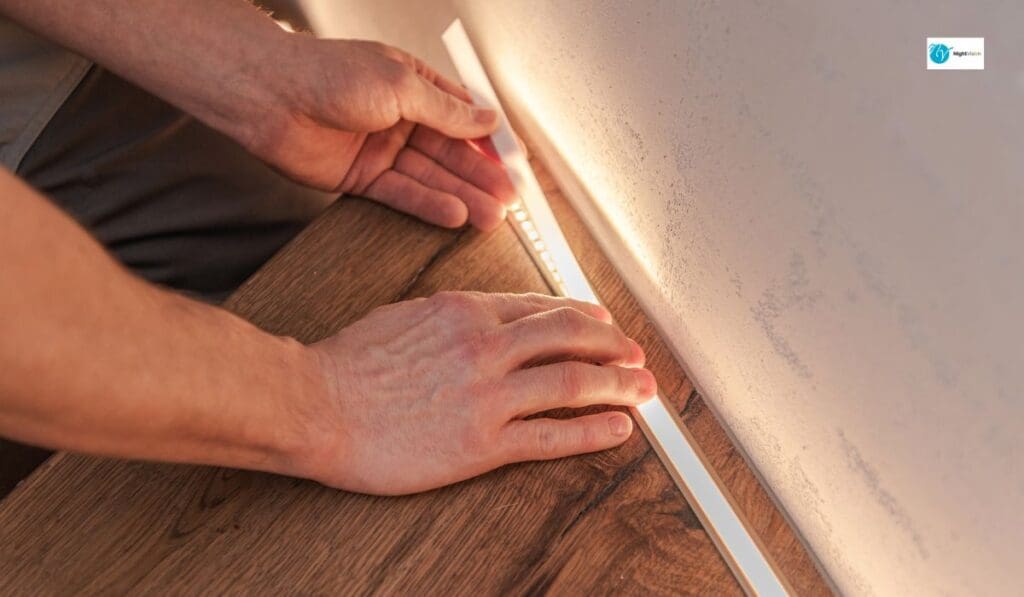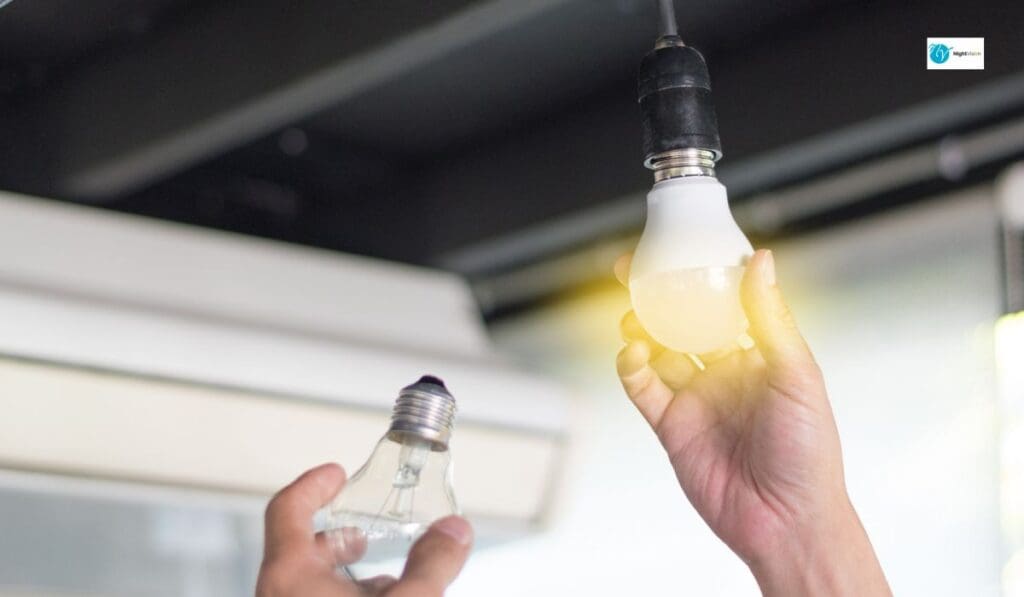LED (Light Emitting Diode) lights have become a staple in modern lighting due to their energy efficiency, longevity, and environmental benefits.
However, like any electronic device, they can encounter issues.
This article delves into common LED light problems and provides solutions to repair them effectively.
Flickering Lights
Issue: Flickering LED lights are a common problem.
They can be caused by fluctuations in voltage, incompatible dimmer switches, loose wiring, or faulty drivers.
Solution:
- Check Voltage: Ensure the power supply is stable.
Use a multimeter to check the voltage consistency. If fluctuations are detected, you may need a voltage stabilizer.
- Dimmer Compatibility: Ensure the dimmer switch is compatible with LED lights.
Replace incompatible dimmers with ones designed for LEDs.
- Inspect Wiring: Loose connections can cause flickering.
Turn off the power and inspect all connections. Tighten any loose wires and ensure all connections are secure.
- Replace Drivers: LED drivers regulate the power supply to the light. If faulty, replace the driver with one that matches the light’s specifications.
Dim Lights
Issue: Dim lighting can result from a weak power supply, aging LEDs, or overheating.
Solution:
- Power Supply: Ensure the light is receiving adequate voltage. Check the specifications and ensure the power supply matches the requirements.
- LED Age: LEDs can dim over time. If the light is old, consider replacing the LEDs or the entire fixture.
- Overheating: Ensure proper ventilation around the LED fixture. Overheating can be prevented by improving airflow or using heat sinks.
Light Not Turning On
Issue: If the LED light doesn’t turn on, it could be due to a blown fuse, faulty wiring, a defective driver, or dead LEDs.
Solution:
- Check Fuse: Inspect the fuse and replace it if blown.
- Inspect Wiring: Look for any loose or damaged wires. Repair or replace faulty wiring.
- Test Driver: Use a multimeter to test the driver. If defective, replace it with a compatible one.
- Replace LEDs: If individual LEDs are dead, replace them or the entire fixture if necessary.
Buzzing Noise
Issue: A buzzing noise often indicates electrical problems, such as incompatible dimmer switches or issues with the driver.
Solution:
- Dimmer Switch: Replace with an LED-compatible dimmer if the existing one is causing the buzz.
- Driver Replacement: If the driver is the source of the noise, replace it with a properly rated driver.
Discoloration
Issue: LED lights can sometimes change color or appear discolored. This is typically due to overheating, poor-quality LEDs, or incorrect voltage.
Solution:
- Overheating Prevention: Ensure adequate ventilation and use heat sinks if necessary.
- Quality LEDs: Invest in high-quality LEDs from reputable manufacturers.
- Correct Voltage: Verify that the power supply matches the LED’s voltage requirements.
Shortened Lifespan
Issue: LEDs that do not last as long as expected can be caused by excessive heat, poor-quality components, or electrical surges.
Solution:
- Heat Management: Ensure the LED fixture has good ventilation and appropriate heat sinks.
- Quality Components: Use LEDs and drivers from reputable manufacturers to ensure longevity.
- Surge Protection: Install surge protectors to safeguard against electrical surges.
Unresponsive Remote Controls
Issue: For LED lights controlled by a remote, an unresponsive remote can be frustrating. This can be due to depleted batteries, interference, or a malfunctioning receiver.
Solution:
- Replace Batteries: Check and replace the batteries in the remote.
- Remove Interference: Ensure no objects are obstructing the line of sight between the remote and the receiver.
- Reset Receiver: Some receivers can be reset by turning the power off and on. Consult the manufacturer’s instructions for specific reset procedures.
Inconsistent Color Temperature
Issue: LED lights displaying inconsistent color temperatures (e.g., some lights appear warmer or cooler than others) can disrupt the desired lighting ambiance.
Solution:
- Check for Quality: Use LEDs from the same batch or manufacturer to ensure consistency.
- Calibrate Settings: For tunable white or RGB LEDs, ensure all lights are set to the same color temperature settings.
Water Damage
Issue: LED fixtures installed in damp or outdoor environments can suffer from water damage, leading to malfunction.
Solution:
- Seal Fixtures: Use waterproof fixtures rated for outdoor or damp environments (IP65 or higher).
- Check for Leaks: Inspect for any gaps or cracks in the fixture housing and seal them properly.
Sudden Brightness Drop
Issue: A sudden drop in brightness can indicate problems with the power supply, overheating, or failing components.
Solution:
- Inspect Power Supply: Ensure the power supply is stable and provides consistent voltage.
- Cooling Measures: Implement additional cooling measures to prevent overheating.
- Component Replacement: If a particular component is failing, replace it with a high-quality equivalent.
General Maintenance Tips

- Regular Cleaning: Dust and debris can accumulate on LED fixtures, reducing efficiency and causing overheating. Regularly clean the fixtures with a soft cloth.
- Proper Installation: Ensure LEDs are installed according to manufacturer guidelines to prevent electrical issues.
- Use Appropriate Fixtures: Ensure the fixtures are designed for the specific application, whether indoor, outdoor or in high-moisture environments.
Conclusion
LED lights, while highly efficient and long-lasting, can encounter a variety of issues over their lifespan.
By understanding common problems and their solutions, you can effectively repair and maintain your LED lighting system, ensuring it operates at peak performance.
Always follow safety protocols when handling electrical components and consult a professional if unsure about any repairs.
With proper care and timely maintenance, your LED lights can provide reliable and efficient lighting for years to come.
For professional assistance and expert solutions to your LED light issues, NightVision Outdoor Lighting.
Our team of qualified electricians is ready to help you keep your lighting system in top condition.
FAQs
Why are my LED lights flickering?
Voltage fluctuations, incompatible dimmer switches, loose wiring, or faulty drivers can cause flickering LED lights. Ensure the power supply is stable, use dimmers compatible with LEDs, check and secure wiring connections, and replace faulty drivers as needed.
What should I do if my LED lights are dim?
Dim LED lights may indicate a weak power supply, aging LEDs, or overheating. Verify the power supply matches specifications; consider replacing aging LEDs or improving ventilation around the fixture.
How do I fix LED lights that won’t turn on?
LED lights that fail to turn on could be caused by a blown fuse, faulty wiring, a defective driver, or dead LEDs. Check and replace the fuse, inspect and repair wiring, test and replace the driver if necessary, or replace dead LEDs.
Why do my LED lights make a buzzing noise?
Buzzing noises in LED lights often stem from incompatible dimmer switches or issues with the LED driver. Replace dimmers with ones compatible with LEDs or replace the driver with an adequately rated one.
What causes LED lights to change color or appear discolored?
LED lights can change color or appear discolored due to overheating, poor-quality LEDs, or incorrect voltage. Ensure proper ventilation, use high-quality LEDs, and verify the power supply matches LED requirements.
How can I extend the lifespan of my LED lights?
To prolong the LED lifespan, manage heat effectively with good ventilation and heat sinks, use quality components from reputable manufacturers, and install surge protectors to guard against electrical surges.
What should I do if my LED remote control stops working?
If an LED remote control becomes unresponsive, check and replace the batteries, ensure no objects obstruct the signal path between the remote and receiver, and follow manufacturer instructions to reset the receiver if needed.
How do I maintain LED lights for optimal performance?
Maintain LED lights by regularly cleaning dust and debris, following proper installation guidelines, and using fixtures suitable for specific applications (indoor, outdoor, high-moisture environments).
What should I do if my LED lights show inconsistent color temperatures?
Inconsistent color temperatures in LED lights can disrupt lighting ambiance. For consistency, use LEDs from the same batch or manufacturer and calibrate settings correctly for tunable white or RGB LEDs.
How do I protect outdoor LED lights from water damage?
A: Protect outdoor LED lights from water damage by using waterproof fixtures rated for outdoor environments (IP65 or higher) and regularly inspecting fixture housings for leaks or cracks.
Why are my LED lights suddenly dimming or fluctuating in brightness?
LED lights may dim or fluctuate in brightness due to issues with the power supply, overheating, or failing components. Ensure stable voltage from the power supply, improve cooling measures to prevent overheating, and consider replacing any failing components.
What should I do if my LED lights have a sudden drop in brightness?
A sudden drop in brightness can indicate issues with the power supply, overheating, or failing components. Inspect the power supply for stability, implement additional cooling measures, and replace any failing components with high-quality equivalents.
How can I troubleshoot LED lights that show signs of water damage?
LED lights installed in damp or outdoor environments may show signs of water damage. Use waterproof fixtures rated for outdoor use (IP65 or higher), inspect for gaps or cracks in the fixture housing, and ensure proper sealing to prevent water ingress.




